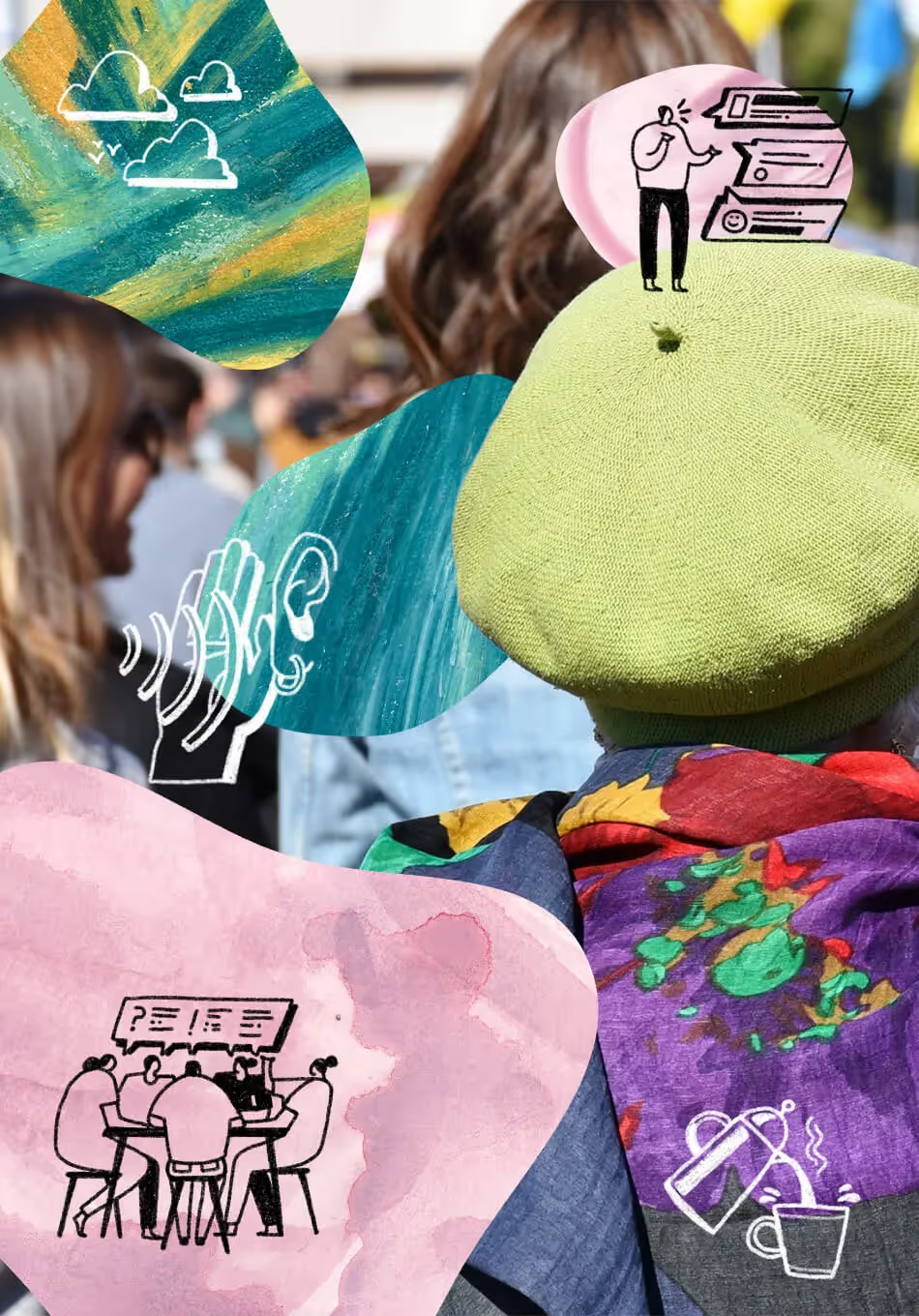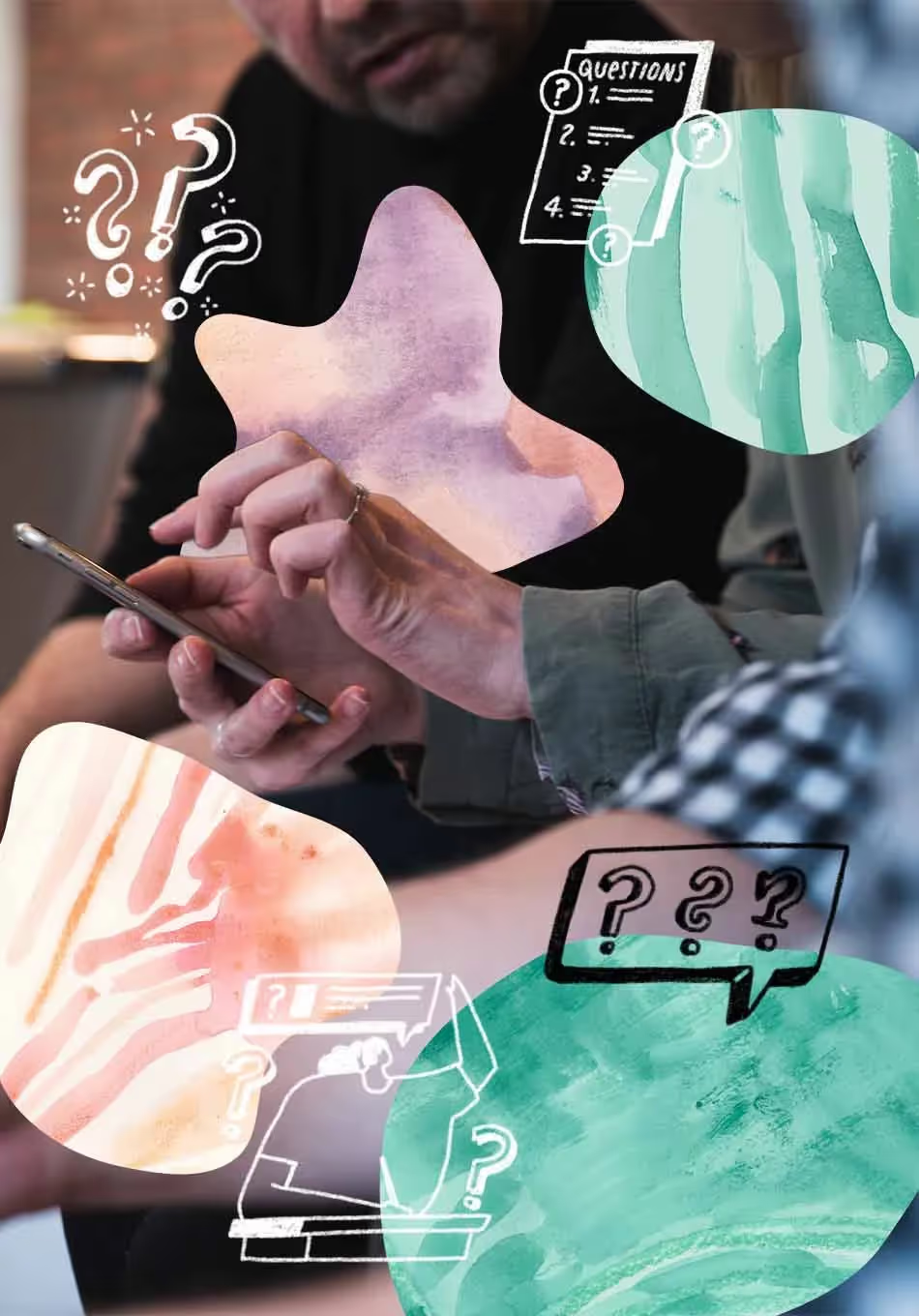Ethnography—”recording the life of a particular group” (p. 21)—has a long tradition in the design thinking process. Its goal of gleaning an insider’s perspective has long driven open-ended, unstructured data collection—from interviews and focus groups to in-store and in-home observations.
How might ethnography help level up your research, product, or design practice? We asked industry ethnographers to share one (or two) ethnography-inspired skills they believe any researcher should cultivate. Here’s what they had to say.
Note: The following sections are in the words of our contributors, with light editing for clarity.
Show, don’t tell—and stay adaptable
Ana Couvinhas, Lead Strategic UX Researcher, OutSystems
First, I’ve noticed from my own experience in different fields that tracking the research impact is a vital skill to prove the value of ethnographic research.
To spotlight the enduring importance of ethnography, researchers need to get internal buy-in, and to do so we need to prove the value of ethnographic research to internal stakeholders and decision-makers.
Efficiently working with multiple stakeholders and raising awareness on the importance of ethnography is essential.
Just saying why ethnographic research is valuable is not enough. We need to show evidence to prove the value of our research!
Measuring the impact would be the ideal thing to do. We know that tracking is not measuring, but it’s a good initial step to prove the value of ethnographic research.
At OutSystems, we have been exploring and iterating on different ways to show evidence. And to do so, we started tracking the impact of what we deliver. We haven’t yet reached a perfect solution (does it exist?!) and there are surely a lot of different ways to show evidence.
Finding out the best way to track ethnographic research impact and prove its value has been a long and sometimes frustrating journey. Nevertheless, due to this five-year iterative process, UX researchers (ethnographers included) at OutSystems currently play an active role on strategic tracks that directly influence product direction.
Second, I have worked in many different contexts—from ethnographic studies in remote communities to strategic research with cutting-edge tech companies. And I have noticed that ethnographers are constantly adapting to different contexts. And the ones that do it efficiently apply systems thinking.
Ethnographers that are systems thinkers look at the entire picture and relationships before making decisions. And that unique perspective gives them the power to drive the direction of projects and adapt to changes.
By using the systemic approach, ethnographers help organizations and people adapt to every context. And they have the responsibility to influence organizations based on their review of every aspect of that context. In any scenario, whether that is in a remote rural area or on a global scale, ethnographers have a lasting impact on organizations because of how they help them emerge stronger after changes.
To learn more:
- To see how we apply systems thinking in different contexts, please watch the "Systems Thinking for Ethnographers" session.
- To see how we track the [ethnographic] research impact at OutSystems, please watch the "Track UX Research, Prove its Value" presentation.
Melody Koebler. Qualitative Researcher, Digital and Visual Anthropologist, Ethnographer. Freelance Consultant.
Stakeholders crave insights that go beyond numbers, decks and charts. When you can weave together robust qualitative research with compelling visual stories the value of your research insights increase. Conveying findings in a compelling and engaging manner helps stakeholders really understand what is going on and gives them the confidence to make executive decisions backed by data.
Ethnographers constantly navigate ambiguity and are adaptable in the face of shifting terrain. Working with emerging technologies is challenging because research participants often do not have familiarity with a product space or the lexicon to communicate about something they have little, or no, experience with.
When things get complicated, taking different approaches to research can help create new avenues for exploration and generate beneficial insights.
EPIC has fabulous resources for researchers. Among other things, it showcases ethnographic films and intermittently offer courses on film as a tool for researchers. I also recommend exploring award-winning documentaries to see how compelling narratives are crafted. Take a storytelling course to learn the basics of narrative structure. Together, these things will help build storytelling skills that enhance a researcher’s value. For those inclined to dive deeper, Looking Two Ways: Documentary Film’s Relationship with Reality and Cinema by Toni de Bromhead is a condensed yet nuanced read.
Maintain cognitive flexibility
Jennifer Hunsecker, UX Research Manager at TaxAct
Cultural relativism is what drew me to ethnography. Thinking of difference as neutral or positive was world-expanding for me.
I first learned about the concept in my Introduction to Anthropology course, though it’s a concept that I continue to engage with regularly. The exercise of trying to put aside preconceptions and assumptions about what other people are doing (and why) requires a tremendous amount of cognitive flexibility. I consider myself a cognitive shape-shifter because I strive to embrace the idea that I don’t know what people are doing or why; I can best come to an understanding of others by hearing what they say and observing what they do.
I currently work for a tax software company. Taxes are an interesting space to work in because they can require so much expertise and are pretty universally disliked. When considering the struggles that people have with taxes—such as lacking an underlying understanding of tax law, misunderstanding terms, and feeling unclear whether or not they entered information correctly—it can be easy to come to the conclusion that people are unwilling to put time and effort into taxes.
However, shifting my perspective to that of an average person, I realized that the benefit of learning tax law has a relatively low payoff for most people. What people really desire is to trust someone (a tax professional or tax software) to handle the knowledge aspect for them. Framing the needs of tax filers in this way helps to build empathy for our customers and ensures that we align on meeting their needs.
The best way to grow the ability to be a cognitive shape-shifter is to regularly engage with media that is created by people from groups you do not belong to. Reading, watching, or listening to media that presents things from a different perspective, then critically reflecting on what stood out to you, and why, can open up doors to learning so much more about the world.
Stay contemplative
Julie Krohner, Founder at Lighting Up Rooms
I’ve been weaving mindfulness and contemplative practices into my ethnography and coaching practice for years. I attribute my success and happiness to them, 23 years into this work.
Two skills co-opted from meditation are:
- Crossing the threshold gratitude practice
- Silent post-interview walks
When I enter a home or workplace, I do a gratitude thought exercise before crossing the threshold—meaning, their doorway. I knock, and while I wait for them to answer I remind myself of my why. Why am I here? Why has this person agreed to invite me here? How can I receive all that they will impart with curiosity, wonderment and empathy? Then I take a deep breath and cross into their world.
When I leave, I instruct everyone with me (videographers, clients, other researchers)to say nothing to each other until we’ve taken a silent walk around the block—in different directions! Think about the person you just met. Turn over a few things they said in your mind, and don’t discuss them with colleagues until you’ve written down your thoughts. Skip the car ride back debrief. Talk about anything BUT that person.
Both of these practices create the right frequency for optimal insight, engender respect and gratitude for the participant, and decrease bias. They have been invaluable tools for me, and unforgettable ways to get clients singing the praises of ethnography’s value.
Bridge the “say-do” gap
Neetu Mohan, Senior UX Researcher at Scotiabank
The "say-do gap" is a cognitive phenomenon in which users often express specific concerns or intentions but don't follow through with corresponding actions. As an ethnographer, I learned to spot this early in my career. People's biases can affect their words, but their behaviors may reveal a different story.
Ethnographers are skilled at discerning the disparity between what users say and what they actually do, uncovering often overlooked, but valuable insights.
In a virtual setting, deriving insights from customer actions versus words alone becomes crucial. Paying attention to subtle interactions and using multi-pronged research strategies is essential to bridge this gap effectively.
Working with financially vulnerable customers, I've noticed a common gap between their intentions and actions in managing their money. Recognizing this discrepancy has enabled me to gain valuable insights that can directly shape their financial behavior. Consequently, our solutions are designed to influence and guide their actions, bridging the divide between intention and execution for their financial well-being.
Although Daniel Kahneman's books are excellent for understanding cognitive biases, complementing them with readings from Nielsen Norman or Ipsos ethnography, along with practical ethnography sessions, offers a comprehensive view of these biases in real-world scenarios.
Listen more than hear
Lauren Monsein Rhodes, Sr. User Researcher at Cisco
I have been thinking a lot about listening lately. I have not always been a great listener, it is really a skill that you have to learn.
As someone with ADHD, I get distracted by the sounds around me or thoughts that just "suddenly" appear in my head—often during conversation with someone else. It’s not exactly something that lends itself to being a good listener.
It was my dissertation research in Latvia that taught me the importance of active listening. That is, during ethnographic interviews, to truly "get" where your subject is coming from— their perspective, life story, sense of place—you need to listen actively and with intent. It allows you to ask better follow-up questions and to even earn trust.
At work, I have employed active listening in customer interviews. I listen to people talking about their work, their perspectives on our products, and their processes in order to form a better understanding of how they use our products and where we can improve their experience.
There is truly a difference between listening and hearing.
To hear, you just get the words coming out of someone's mouth. To listen means that you actually pay attention to their words and their meanings. And it goes without saying: You do not have to have good hearing to be a good listener.
Some resources that I recommend:
- Anouchka Grose & Robert Brewer Young’s, Uneasy Listening: Notes on hearing and being heard.
- Joe Keohane’s, The power of strangers: The benefits of connecting in a suspicious world.
Uncover the essential
Lydia Timlin-Broussard, Lead Strategic Designer at BCGX
For me, the skill I use the most is being able to tap into hearing others’ decision making less as a magical power or some random raw alpha capability and more as something done in context (often in reaction) to uncertainty. It’s the ability to parse through —but respect—complexity and understand when you are seeing something on an ecosystem level.
I understand, respect, and empathize with others’ passion in the business world to immediately simplify things and clarify “what is the decision we need to get made.” But I find that means the decisions are made on a shorter cycle, and revisited/revised instead of built upon.
To me, ethnography in praxis is like hearing history rhyme the first time you hear it getting made. That’s a very special, specific and rare capability.
More resources on ethnography
- We collected a list of tools that support user researchers with ethnographic studies.
- Join the Ethnographic Praxis in Industry Conference (EPIC) for community resources



















